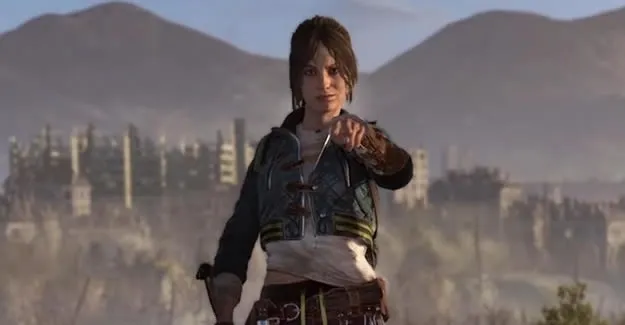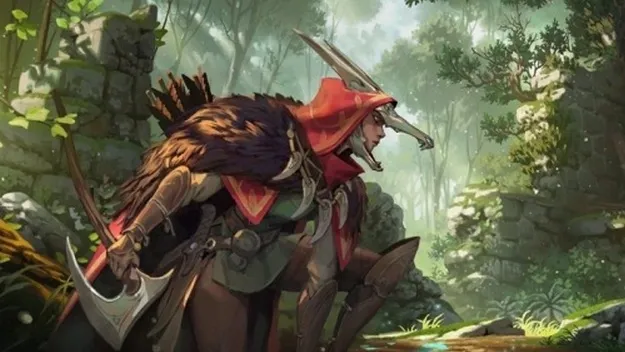Death’s Door - Review
After the notable success that the small team Acid Nerve managed to achieve in 2015 when they released their first title Titan Souls (2D game that perfectly adapted roguelike action RPG gameplay popularized by the newer "Souls" games from FROM Software), the team threw in a debt and at some point an endless endeavor to make a new title. After a long time of experimentation, they focused on isometric 3D gameplay and a good mix of Souls / Metroidvania gameplay systems packed into the final form of Death’s Door.
Death’s Door is a likably realized action adventure with an isometric 3D camera that places us in the boots of a young crow working in the Ministry of Death - a bureaucratic institution that takes care of transporting the souls of the dead from the world to the dimension of death. And since this job is very dangerous from time to time and requires death agents to step into the world of the living, our protagonist is equipped with a sword and arrow and the capacity to become a drastically better fighter during a campaign that lasts just under 10 hours.
At the very beginning of the game, our unnamed protagonist is sent on a routine mission of gathering a very strong soul, with the warning that every second spent in the real world makes our hero older. Of course, this mission is very quickly complicated by the theft of that soul, and the discovery of a mysterious door through which the mystery of eternal life and great magical power is potentially hidden. Armed with this information, our protagonist gets the main quest to explore the dark corners of the world of the living in which powerful beings who have long refused to die are hiding.
These side quests send us to the Witch's Castle, overgrown Ruins, dangerous Sea Coast, and Lost Cemetery, where powerful bosses, a wide range of imaginatively realized opponents, labyrinths full of action challenges, and the potential to find many upgrades, collectible items, and XP, which is used to improve the main features of our hero.
The gameplay of the game at first glance is not complicated. The crow moves quickly on the ground, there is a button for dash / evade, as well as moves for a stronger "charged" blow and lighting magic. At the beginning of the game, the fights on the field are evenly distributed with small groups of opponents who can be easily shot.
But as the campaign progresses, the game will begin with the player trapped in mini-arenas where he will be attacked by waves and waves of opponents.
One of the better features of the game is the relatively short distance from spawn points to heavier sequences in their regions. Each region is designed so that the spawn point is located in its hub zone, with many shortcuts leading to a part of the region that the player has not fully explored.
This allows you to return very quickly to the boss or battle arena that defeated you. Although all opponents respawn after your death, most of them are not difficult to shoot and will be only a small obstacle on the way to solving the current quest.
One unique part of the game is the presence of a "stamina" system that allows the use of magic attacks. Namely, any blow to opponents or breakable elements in the environment will add one stamina point that can be spent on magic attacks (magic arrow, fireball, and others).
With this move, the game developers made it known to the player that they cannot escape from direct combat with opponents (especially bigger and more dangerous ones), and that they need to approach and strike them to refresh their stamina points for magic attacks.
A break from combat sequences consists of small puzzles that usually require manipulating switches, fire, or finding keys, but once you solve them you will not be forced to reactivate them after death. Refreshing the HP scale while playing is possible through a flower growing system in special pots that are strategically arranged by levels.
For growing flowers, it is necessary to find special seeds, which, once planted, will be able to be used once during each life. Players who are willing to spend a little time exploring every corner of the level will be rewarded with:
- about two-tenths of the collectible item
- four additional melee weapons (each with its stats and speed of use)
- temples to strengthen HP and MP scales
- additional XP that can be replaced in the main hub of the Ministry of Death to permanently strengthen base stats such as power, speed, ranged attacks, and magic.
As for the presentation, this game manages to attract attention from its first intro sequence. It looks very appealing visually, and it's not too demanding, so it can be easily played on more modest PC configurations.
Console versions have also come out, and only the Nintendo Switch version stands out from all the others in its focus on the sometimes unstable 30fps rendering that somewhat degrades the level of presentation and smoothness of the gameplay. The game does not have voice acting, but the music is very well realized and blends in with interesting locations.
Death’s Door managed to surprise us with its atmosphere, a well-designed world full of interesting locations to explore, a quality soundtrack, a simple but very satisfying main character upgrade system, and of course a very good combat system. While none of these elements are extraordinarily better than those found in many similar indie titles today, Death’s Door manages to combine all of its elements into a truly rare game.
Although it has a good old "Souls" basis, the biggest penalties of that system are drastically simplified here, leaving us with a game that is just tense and challenging enough to make us always play it no matter how many times we come across (often combat) an obstacle that stopped us.

















